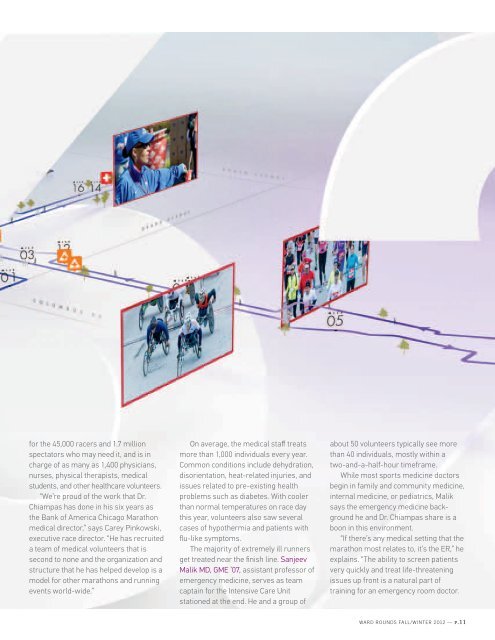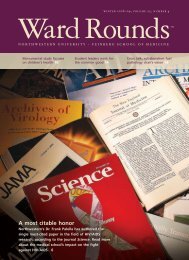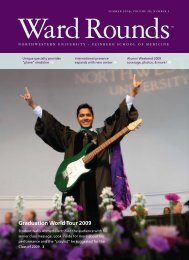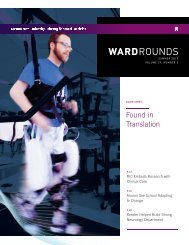Download PDF - Ward Rounds - Northwestern University
Download PDF - Ward Rounds - Northwestern University
Download PDF - Ward Rounds - Northwestern University
Create successful ePaper yourself
Turn your PDF publications into a flip-book with our unique Google optimized e-Paper software.
for the 45,000 racers and 1.7 million<br />
spectators who may need it, and is in<br />
charge of as many as 1,400 physicians,<br />
nurses, physical therapists, medical<br />
students, and other healthcare volunteers.<br />
“We’re proud of the work that Dr.<br />
Chiampas has done in his six years as<br />
the Bank of America Chicago Marathon<br />
medical director,” says Carey Pinkowski,<br />
executive race director. “He has recruited<br />
a team of medical volunteers that is<br />
second to none and the organization and<br />
structure that he has helped develop is a<br />
model for other marathons and running<br />
events world-wide.”<br />
On average, the medical staff treats<br />
more than 1,000 individuals every year.<br />
Common conditions include dehydration,<br />
disorientation, heat-related injuries, and<br />
issues related to pre-existing health<br />
problems such as diabetes. With cooler<br />
than normal temperatures on race day<br />
this year, volunteers also saw several<br />
cases of hypothermia and patients with<br />
flu-like symptoms.<br />
The majority of extremely ill runners<br />
get treated near the finish line. Sanjeev<br />
Malik MD, GME ’07, assistant professor of<br />
emergency medicine, serves as team<br />
captain for the Intensive Care Unit<br />
stationed at the end. He and a group of<br />
about 50 volunteers typically see more<br />
than 40 individuals, mostly within a<br />
two-and-a-half-hour timeframe.<br />
While most sports medicine doctors<br />
begin in family and community medicine,<br />
internal medicine, or pediatrics, Malik<br />
says the emergency medicine background<br />
he and Dr. Chiampas share is a<br />
boon in this environment.<br />
“If there’s any medical setting that the<br />
marathon most relates to, it’s the ER,” he<br />
explains. “The ability to screen patients<br />
very quickly and treat life-threatening<br />
issues up front is a natural part of<br />
training for an emergency room doctor.<br />
ward rounds Fall/Winter 2012 — p.11












